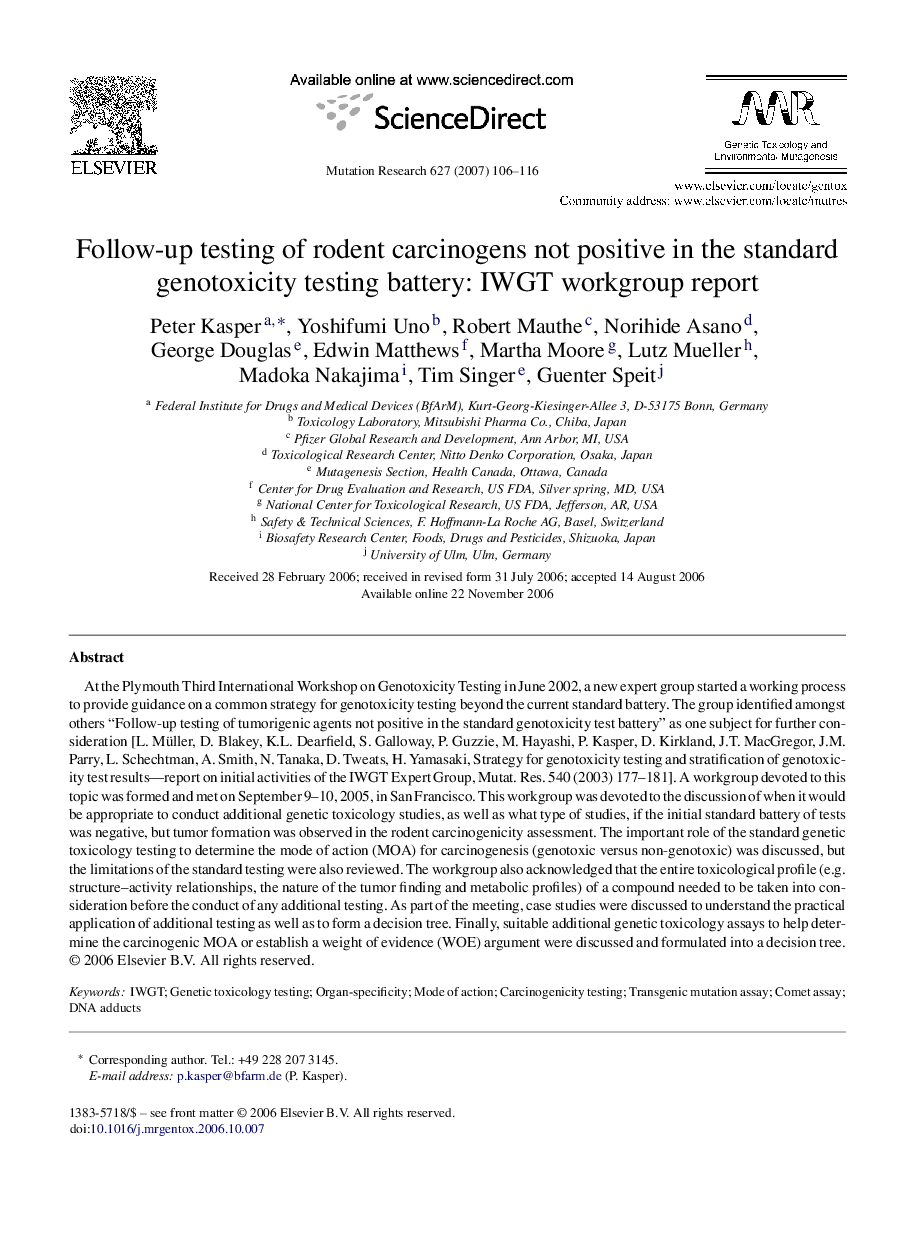| Article ID | Journal | Published Year | Pages | File Type |
|---|---|---|---|---|
| 2149298 | Mutation Research/Genetic Toxicology and Environmental Mutagenesis | 2007 | 11 Pages |
At the Plymouth Third International Workshop on Genotoxicity Testing in June 2002, a new expert group started a working process to provide guidance on a common strategy for genotoxicity testing beyond the current standard battery. The group identified amongst others “Follow-up testing of tumorigenic agents not positive in the standard genotoxicity test battery” as one subject for further consideration [L. Müller, D. Blakey, K.L. Dearfield, S. Galloway, P. Guzzie, M. Hayashi, P. Kasper, D. Kirkland, J.T. MacGregor, J.M. Parry, L. Schechtman, A. Smith, N. Tanaka, D. Tweats, H. Yamasaki, Strategy for genotoxicity testing and stratification of genotoxicity test results—report on initial activities of the IWGT Expert Group, Mutat. Res. 540 (2003) 177–181]. A workgroup devoted to this topic was formed and met on September 9–10, 2005, in San Francisco. This workgroup was devoted to the discussion of when it would be appropriate to conduct additional genetic toxicology studies, as well as what type of studies, if the initial standard battery of tests was negative, but tumor formation was observed in the rodent carcinogenicity assessment. The important role of the standard genetic toxicology testing to determine the mode of action (MOA) for carcinogenesis (genotoxic versus non-genotoxic) was discussed, but the limitations of the standard testing were also reviewed. The workgroup also acknowledged that the entire toxicological profile (e.g. structure–activity relationships, the nature of the tumor finding and metabolic profiles) of a compound needed to be taken into consideration before the conduct of any additional testing. As part of the meeting, case studies were discussed to understand the practical application of additional testing as well as to form a decision tree. Finally, suitable additional genetic toxicology assays to help determine the carcinogenic MOA or establish a weight of evidence (WOE) argument were discussed and formulated into a decision tree.
